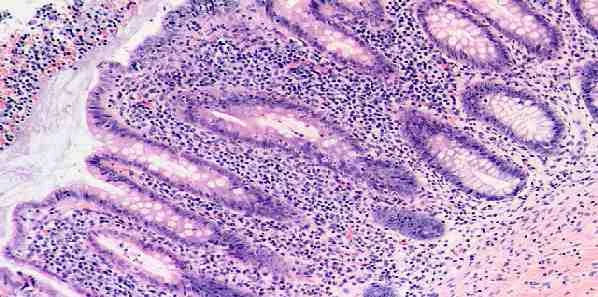According to researchers, combining data from two standard diagnostic tests commonly obtained in children evaluated for abdominal pain can help physicians to identify those patients who need surgery for appendicitis; those who may be admitted for observation; and those who may safely be discharged home. The findings are published online in the Journal of the American College of Surgeons (JACS).
The researchers from Boston Children's Hospital retrospectively assessed major categories of ultrasound findings in children with suspected appendicitis in conjunction with blood tests that signal bacterial infection in 845 children seen in the emergency department between 2010 and 2012. This research is believed to be the one of the first studies to show that the addition of the white blood count (WBC) and polymorphonuclear leukocyte differential (PMN%) data can significantly improve the clinical value of ultrasound in diagnosing appendicitis in children.
"Ninety percent of all hospitals perform laboratory studies and ultrasound when there is a reasonable suspicion of appendicitis in children. Hospitals tend to look at the results of these studies independently, however, and the improved diagnostic value of using these in a complimentary fashion has not yet been reported," said the study's lead author paediatric surgeon Shawn J. Rangel, MD, MSCE, FACS, at Boston Children's Hospital.
"The diagnostic evaluation approach in this study can be used by other institutions as a diagnostic tool to help emergency department physicians and surgeons provide better care by avoiding treatment delay in very high-risk patients and unnecessary admissions for very low risk patients," Dr. Rangel noted.
Ultrasound scans often do not lead to a definitive conclusion about the presence or absence of appendicitis. In the Boston Children's Hospital study, a radiologist could not identify a normal appendix or any evidence of appendicitis on sonogram in more than half of all patients with suspected appendicitis. In contrast, an elevated WBC and a shift in the PMN% differential tend to be sensitive indicators of appendicitis. However, these changes are not always present in children with appendicitis, and such changes may be abnormal even in children who do not have the disease.
Of the 845 children in Dr. Rangel's study, 393 (46.5 percent) had appendicitis. An elevated WBC count was found in 348 (62.1 percent) of these patients, and a PMN% shift was found in 340 (58.5 percent). In children who did not have appendicitis, the WBC was elevated in 212 (37.9 percent), and the PMN% shift occurred in 241 (41.5 percent).
The ability to identify children with and without appendicitis was significantly improved when sonographic and laboratory findings were combined:
Moreover, the ability to single out children who did not have appendicitis also was substantially improved, Dr. Rangel's team noted. In children where the ultrasound showed neither a normal appendix nor evidence of appendicitis (the largest single category of ultrasound findings), the percentage of children who did not have appendicitis rose from 46.0 percent to 98.2 percent when laboratory studies were within normal ranges.
"We are not advocating that other hospitals adopt our sonographic categories or laboratory value cut-offs for WBC and PMN values, but rather to work collaboratively with their radiologists and emergency room physicians to develop their own approach for categorising sonographic findings in their patients with suspected appendicitis, and then develop risk profiles that are tailor-made for their patients after incorporation of their institution's laboratory data," Dr. Rangel said.
Source: American College of Surgeons
Image Credit: Wikimedia Commons
The researchers from Boston Children's Hospital retrospectively assessed major categories of ultrasound findings in children with suspected appendicitis in conjunction with blood tests that signal bacterial infection in 845 children seen in the emergency department between 2010 and 2012. This research is believed to be the one of the first studies to show that the addition of the white blood count (WBC) and polymorphonuclear leukocyte differential (PMN%) data can significantly improve the clinical value of ultrasound in diagnosing appendicitis in children.
"Ninety percent of all hospitals perform laboratory studies and ultrasound when there is a reasonable suspicion of appendicitis in children. Hospitals tend to look at the results of these studies independently, however, and the improved diagnostic value of using these in a complimentary fashion has not yet been reported," said the study's lead author paediatric surgeon Shawn J. Rangel, MD, MSCE, FACS, at Boston Children's Hospital.
"The diagnostic evaluation approach in this study can be used by other institutions as a diagnostic tool to help emergency department physicians and surgeons provide better care by avoiding treatment delay in very high-risk patients and unnecessary admissions for very low risk patients," Dr. Rangel noted.
Ultrasound scans often do not lead to a definitive conclusion about the presence or absence of appendicitis. In the Boston Children's Hospital study, a radiologist could not identify a normal appendix or any evidence of appendicitis on sonogram in more than half of all patients with suspected appendicitis. In contrast, an elevated WBC and a shift in the PMN% differential tend to be sensitive indicators of appendicitis. However, these changes are not always present in children with appendicitis, and such changes may be abnormal even in children who do not have the disease.
Of the 845 children in Dr. Rangel's study, 393 (46.5 percent) had appendicitis. An elevated WBC count was found in 348 (62.1 percent) of these patients, and a PMN% shift was found in 340 (58.5 percent). In children who did not have appendicitis, the WBC was elevated in 212 (37.9 percent), and the PMN% shift occurred in 241 (41.5 percent).
The ability to identify children with and without appendicitis was significantly improved when sonographic and laboratory findings were combined:
- The risk of appendicitis rose from 79.1 percent to 91.3 percent when laboratory studies indicated a bacterial infection and sonography showed primary signs of appendicitis, such as increased blood flow or a thickening in the wall of the appendix.
- The risk of appendicitis rose from 89.1 percent to 96.8 percent when lab results were abnormal and the sonogram showed secondary signs of appendicitis (e.g., fat near the appendix).
Moreover, the ability to single out children who did not have appendicitis also was substantially improved, Dr. Rangel's team noted. In children where the ultrasound showed neither a normal appendix nor evidence of appendicitis (the largest single category of ultrasound findings), the percentage of children who did not have appendicitis rose from 46.0 percent to 98.2 percent when laboratory studies were within normal ranges.
"We are not advocating that other hospitals adopt our sonographic categories or laboratory value cut-offs for WBC and PMN values, but rather to work collaboratively with their radiologists and emergency room physicians to develop their own approach for categorising sonographic findings in their patients with suspected appendicitis, and then develop risk profiles that are tailor-made for their patients after incorporation of their institution's laboratory data," Dr. Rangel said.
Source: American College of Surgeons
Image Credit: Wikimedia Commons
References:
Rangel SJ, et al. (2015) Use of White Blood Cell Count and Polymorphonuclear Leukocyte Differential to Improve the Predictive Value of Ultrasound for Suspected Appendicitis in Children. Journal of the
American College of Surgeons, 2015; DOI:
10.1016/j.jamcollsurg.2015.01.039
Latest Articles
Ultrasound, Surgery, blood test, appendicitis, white blood count
According to researchers, combining data from two standard diagnostic tests commonly obtained in children evaluated for abdominal pain can help physicians...










